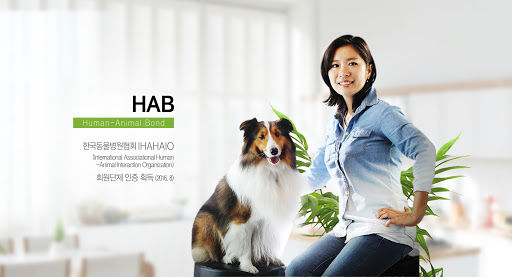 Here are questions and answers with Lee. Q. Since taking office you have called for expansion of the list of medications that require veterinary prescriptions. A. Currently about 20 percent of animal drugs require prescriptions. It became illegal for the unlicensed to practice medical care since July, 2017, but it seems useless. The Ministry of Agriculture, Food and Rural Affairs(MAFRA) is aware of this situation, and the ministry has inquired into different organizations surrounding the issue. Q. Please tell us more about the certification program for veterinary. A. Responsibilities are a major issue. There was a debate over whether they should be allowed to carry out activities such as collecting blood samples, injecting, or scaling. The conclusion is that such activities are not part of their job. Considering a vast majority of vets are small-sized run by one or two professionals, assistants' future employment prospects look dim. Their future depends on the government. Q. In the capital area, which has 60 percent of the vets, changes are taking place such as franchises, large-sized clinics and specialized clinics. It has led to survival of small-sized ones being tough. A. The number of vets in Korea indicates the country has reached saturation. Competition is fierce because there are more than 500 new licensed professionals every year — most of whom end up in small animal clinics. It worries me that the country's industry structure is expected to go through unprecedented change soon. It's an issue that needs to be addressed together — by the government, the animal health sector, the public health sector, and owners of companion animals. It is an issue that is closely related to the future of our society. Q. Please tell us about your plan to expand European clinician certification programme. A. We have been preparing for a few years to bring in the International School of Veterinary Postgraduate Studies(ISVPS) education system. Last year we launched the general practitioner certificate in small animal surgery (GPCert SAS). We are planning to respectively launch the GPCert SAM(small animal medicine) course in May and the dentistry course in September. It is an officially recognized education programme, in which experts from Europe and the United States visit Korea to give lectures. The clinical training takes place in Japan. We expect it to improve the skills of our clinicians and to meet the growing expectations of pet owners. Q. The country flooded with vets has created issues. Even the information on their websites is not trusted. A. With an increase in the number of pet owners, regulations for human health care is likely to be applied to animals to solve such social problems. We need to review commercials and take the right action accordingly. However, there are a lot of legal limitations with taking disciplinary actions. Q. There is a growing demand for social responsibility of veterinarians. We haven't been negligent to that aspect of our work. Since 2007 we have endeavored in many activities for the communication and mutual growth between people and animals. In the center of these activities is the HAB(Human Animal Bond) Committee. It is an organization with an international certification for education in animal behavior as well as animal-assisted therapy. From now on, we are planning to strengthen our social responsibility, including the HAB project, so we may upgrade the companion animal culture of Korea.
Here are questions and answers with Lee. Q. Since taking office you have called for expansion of the list of medications that require veterinary prescriptions. A. Currently about 20 percent of animal drugs require prescriptions. It became illegal for the unlicensed to practice medical care since July, 2017, but it seems useless. The Ministry of Agriculture, Food and Rural Affairs(MAFRA) is aware of this situation, and the ministry has inquired into different organizations surrounding the issue. Q. Please tell us more about the certification program for veterinary. A. Responsibilities are a major issue. There was a debate over whether they should be allowed to carry out activities such as collecting blood samples, injecting, or scaling. The conclusion is that such activities are not part of their job. Considering a vast majority of vets are small-sized run by one or two professionals, assistants' future employment prospects look dim. Their future depends on the government. Q. In the capital area, which has 60 percent of the vets, changes are taking place such as franchises, large-sized clinics and specialized clinics. It has led to survival of small-sized ones being tough. A. The number of vets in Korea indicates the country has reached saturation. Competition is fierce because there are more than 500 new licensed professionals every year — most of whom end up in small animal clinics. It worries me that the country's industry structure is expected to go through unprecedented change soon. It's an issue that needs to be addressed together — by the government, the animal health sector, the public health sector, and owners of companion animals. It is an issue that is closely related to the future of our society. Q. Please tell us about your plan to expand European clinician certification programme. A. We have been preparing for a few years to bring in the International School of Veterinary Postgraduate Studies(ISVPS) education system. Last year we launched the general practitioner certificate in small animal surgery (GPCert SAS). We are planning to respectively launch the GPCert SAM(small animal medicine) course in May and the dentistry course in September. It is an officially recognized education programme, in which experts from Europe and the United States visit Korea to give lectures. The clinical training takes place in Japan. We expect it to improve the skills of our clinicians and to meet the growing expectations of pet owners. Q. The country flooded with vets has created issues. Even the information on their websites is not trusted. A. With an increase in the number of pet owners, regulations for human health care is likely to be applied to animals to solve such social problems. We need to review commercials and take the right action accordingly. However, there are a lot of legal limitations with taking disciplinary actions. Q. There is a growing demand for social responsibility of veterinarians. We haven't been negligent to that aspect of our work. Since 2007 we have endeavored in many activities for the communication and mutual growth between people and animals. In the center of these activities is the HAB(Human Animal Bond) Committee. It is an organization with an international certification for education in animal behavior as well as animal-assisted therapy. From now on, we are planning to strengthen our social responsibility, including the HAB project, so we may upgrade the companion animal culture of Korea.









